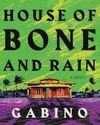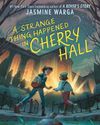
July 25, 1847. Le Port-Marly, just outside Paris.
Alexandre Dumas had sent out a mere 50 invitations to his party-but naturally, some 600 people show up.
It's a testament to his larger-than-life character ... and a development the author likely takes in stride (with great pride). Tables dot the lawn. A gratuitous feast is prepared. Dumas' pet monkeys frolic about. As André Maurois would detail in a biography a century later, "Radiant, Dumas circulates among his guests. His coat glitters with crosses and badges; his brilliant waistcoat is festooned with a heavy chain of massive gold; he kisses the beautiful ladies and tells marvelous stories the whole night. Never has he been happier ..."
All the while, the incredible castle he now calls home looms over the proceedings. And rightly so-for this is a housewarming party.
Sometimes, life reflects art. But in the greatest literary destinations and writer homes, the line between the two all but disappears. Here, Dumas has quite literally become the Count of Monte Cristo.
Dumas first came to Paris in 1823, when he was 21. He had no money, but he had a penchant for words and before becoming the novelist he is remembered as today, he achieved notoriety as a playwright. By the mid-1830s, newspaper serials had taken off, and The Three Musketeers and The Count of Monte Cristo soon sprang forth from Dumas' pen, alongside hordes of other characters. By the end of his life, The Guardian estimates he had banked more than 4,000 primary characters, 9,000 secondary ones, and 25,000 walk-ons across hundreds of books.
This story is from the September - October 2023 edition of Writer’s Digest.
Start your 7-day Magzter GOLD free trial to access thousands of curated premium stories, and 9,000+ magazines and newspapers.
Already a subscriber ? Sign In
This story is from the September - October 2023 edition of Writer’s Digest.
Start your 7-day Magzter GOLD free trial to access thousands of curated premium stories, and 9,000+ magazines and newspapers.
Already a subscriber? Sign In

Writing for a Warming World - Imagining the overwhelming, the ubiquitous, the world-shattering.
Climate change is one of those topics that can throw novelists—and everyone else—into a fearful and cowering silence. When the earth is losing its familiar shapes and consolations, changing drastically and in unpredictable ways beneath our feet, how can we summon our creative resources to engage in the imaginative world-building required to write a novel that takes on these threats in compelling ways? And how to avoid writing fiction that addresses irreversible climate change without letting our prose get too preachy, overly prescriptive, saturated with despair?

Kids' Author Meg Medina Inspires Readers
WD chats with the National Ambassador of Young People’s Literature.

The Horrors of Grief
Whether hot off the presses or on the shelves for years, a good book is worth talking about.

The Mystery of Growing Up
New York Times-bestselling author Jasmine Warga tackles a new genre with her signature blend of empathy for her readers, agency for her characters, and the belief that art is the great connector.

Education
Even if it's not your thing, you're probably familiar with the term dark academia.

A Do-Over Romance
Karin Patton, the first-place winner of the 24th Annual Writer's Digest Short Short Story Awards, shares a funny story about secondchance love and a brief Q&A.

Everyday Wonder
How to mine awe from the mundane

From Ordinary to Extraordinary
Unveil the hidden beauty in the facts and transform your nonfiction with the power of wonder.

Childhood: Our Touchstone for Wonder
How to get in touch with Little You and create big new work for today.

Agent Roundup
22 agents share details, about what kind of writing will pique their interest and offer tips for querying writers...